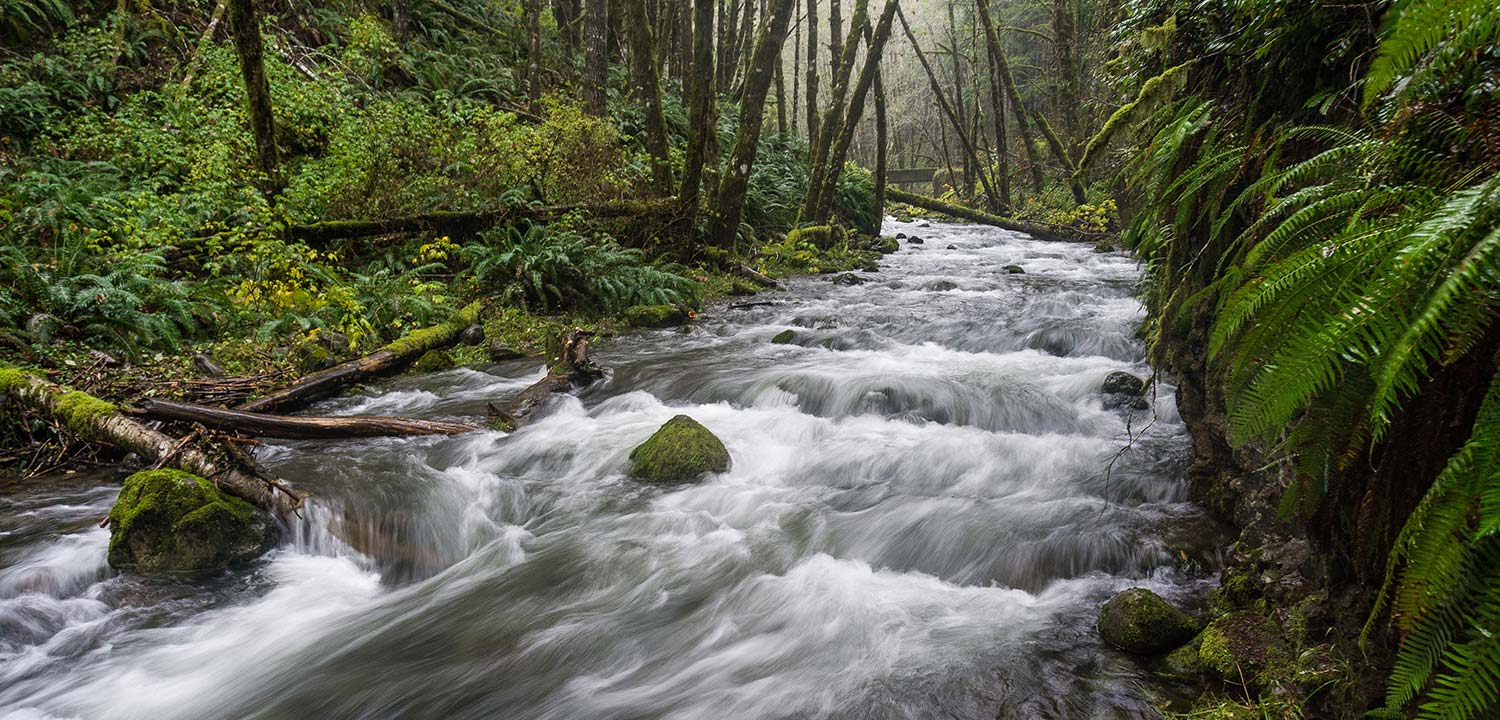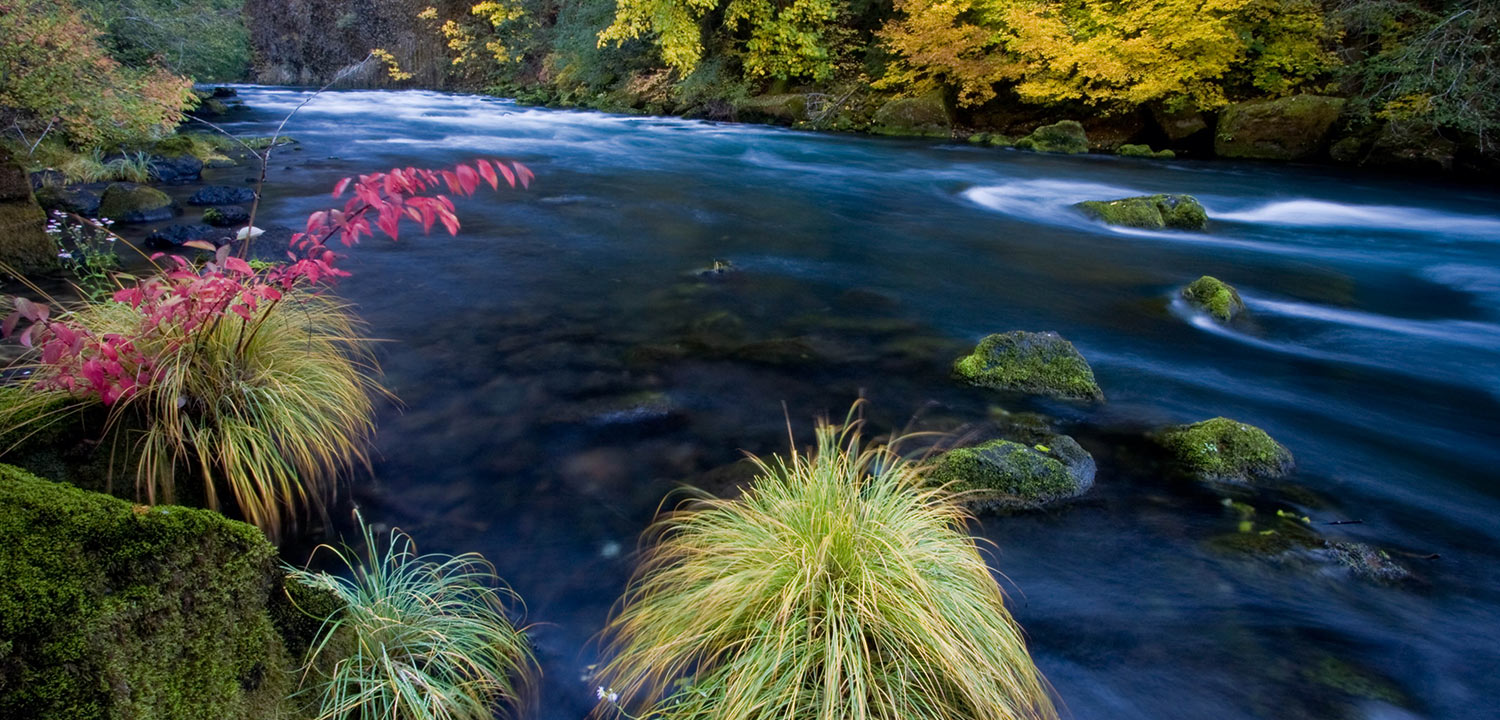Draft O&C bill protects key watersheds for drinking water, fish, and wildlife.
Today Senator Ron Wyden released his draft bill proposing a long-term solution for the management of 2.1 million acres of federal Oregon and California Lands (“O&C Lands”) in Western Oregon. The plan proposes dividing the landscape into areas for forestry emphasis and conservation emphasis, balancing timber harvest with protection for drinking water, ancient forests, fish and wildlife, and recreation.
WSC President Guido Rahr commended Senator Wyden’s draft bill, “We applaud Senator Wyden’s efforts to craft a balanced plan to protect Oregon’s iconic salmon rivers and invaluable drinking water sources. We look forward to working with the Senator and his staff to ensure that Oregonians continue to enjoy the many ecological, economic, and recreational benefits of healthy, wild salmon watersheds.”
Protecting Oregon’s drinking water

Approximately 75% of O&C Lands are identified by the Oregon Department of Environmental Quality as vital to providing clean drinking water for over 1.8 million Oregonians. Senator Wyden’s plan would enshrine into law robust streamside protections and limitations on road building in sensitive areas to ensure that many of Western Oregon’s waterways continue to produce cold, clean water for ecosystems and communities. The draft bill also creates a new, permanent designation— “Drinking Water Emphasis Areas”— where municipal water providers from Hillsboro, Springfield, Eugene and Clackamas have identified specific portions of watersheds warranting permanent protections. WSC’s VP of Conservation Finance and External Affairs, Greg Block, hailed the new designations.
“Water protection measures included in the draft bill will help ensure these rivers retain their ability to naturally cool and purify water, providing safe, affordable drinking water for downstream communities,” said Block. “We look forward to working with additional municipal water providers throughout the state to expand these protections and prevent the degradation of our water quality, requiring costly engineered solutions to accomplish what a healthy watershed does naturally.”
Protecting salmon strongholds

Over 1400 miles of rivers for fish and wildlife and many of Oregon’s renowned rivers— including the North Umpqua, Rogue, Illinois, McKenzie, Nestucca, Mollala, Sandy and Clackamas—are within O&C Lands and support the healthiest wild salmon and steelhead runs south of Canada.
“Oregon’s salmon strongholds—our watersheds where wild salmon populations are still healthy and strong—represent the best chance for the long-term survival of the species,” Rahr noted. “This plan helps ensure Oregon’s strongholds will have permanent protection and benefit future generations.”
Consolidating the “checkerboard”
O&C Lands are interspersed with private timber lands in a checkerboard pattern traversing many watersheds throughout Western Oregon. The fragmented lands present challenges for conservation due to the different levels of watershed protection that apply to federal and private lands. Addressing part of this issue, Sen. Wyden included a voluntary land exchange facility.
“Sen. Wyden recognizes that strategic land exchanges and acquisitions offer the opportunity to both improve timber management and conservation by making sure larger blocks of critical salmon and steelhead habitat are protected,” said Rahr.
Looking forward
Senator Wyden will likely confront many obstacles to enacting the draft bill in a deeply divided Congress.
“We will continue working with Chairman Wyden and other congressional leaders to protect drinking water sources and wild salmon strongholds,” Block said. “We will also work shoulder to shoulder with our colleagues to ensure the final bill will not impinge on the public’s ability to participate in the implementation of the proposed plan and there is adequate opportunity to challenge unlawful government agency activity when necessary.”
Contact: Greg Block, Wild Salmon Center, 503-201-3678; gblock@www.wildsalmoncenter.org

